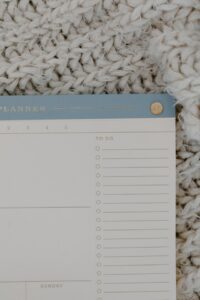Each Medicare Prescription Drug Plan (PDP) has its own set of covered drugs that is called a formulary. The drug plans are then placed into different Tiers in their formulary, and each of those tiers requires a separate amount that you will pay for your prescriptions.
Basically the tiers are a way of holding down costs for both the plans and the enrollees. The way they are able to achieve this is by charging lower copays for less expensive drugs, and higher copays for the costlier ones. In some cases, if your drug is on a higher tier and your prescriber thinks you need that medication instead of a similar drug on a lower tier, you or your prescriber can ask your plan for an exemption for a lower copayment.
The easiest way to find out what tier your prescription medication falls under is by taking a look at your plan’s drug guide that is provided for you. Here is a breakdown of the Tiers.
- Tier 1: Preferred Generic. These are commonly prescribed generic drugs. This tier always carries the lowest copay. These drugs contain the same active ingredients as their brand name counterparts.
- Tier 2: Generic. This is the Tier that consists of medium cost prescription drugs. Most are generic, and there are some brand name prescription drugs.
- Tier 3: Preferred brand. These are brand-name drugs that don’t have a generic equivalent. They’re the lowest-cost brand name drugs on the drug list.
- Tier 4: Non-preferred brand. These are higher-priced brand-name drugs. They often have a generic equivalent. This Tier consists of high price prescription drugs. Most are brand name and specialty drugs.
- Tier 5: Specialty. These are the most expensive drugs on the drug list. Specialty drugs are used to treat complex conditions like cancer… They can be the generic or brand name.
What If There Are Changes to a Formulary?
A Medicare drug plan can make some changes to its formulary during the year within the guidelines that have been set by Medicare. If the changes involve a prescription drug you’re currently taking, your plan must provide written notice to you at least 60 days prior to the date the change becomes effective. At the time you request a refill, you must be provided written notice of the change and a 60-day supply of the drug under the same plan rules as before the change.
Check Your Plan’s Summary of Benefits
To find out how much you will be paying for your prescription drugs, you can find that information in your plan’s Summary of Benefits. It will have a section on prescription drug costs, and it will break down your copay or coinsurance for each drug tier. Please keep in mind — you will be paying full price for your prescription medications if you have not yet met your plan’s pharmacy deductible. You will also pay more if you are in the coverage gap or donut hole.
Entering the Coverage Gap
However, when a beneficiary enters the Coverage Gap, they may not remain there the entire year. Plus, while they’re in the Gap, the drug companies have a responsibility towards the cost-share. If a Beneficiary is able to meet their TROOP (True Out Of Pocket) they will enter Catastrophic Coverage for the remainder of the year, which will greatly reduce the cost of prescriptions. These costs are only counted for the current Medicare year, which is from January 1st to December 31st. Everything starts from zero on January 1st of the next year.
Do you need help with prescription drug cost? Did you know that some Medicare beneficiaries qualify for Extra Help?
Speak with one of our agents to see if there is a plan with Gap coverage in your area, or to compare plans that will have the lowest out of pocket costs while in the gap.







